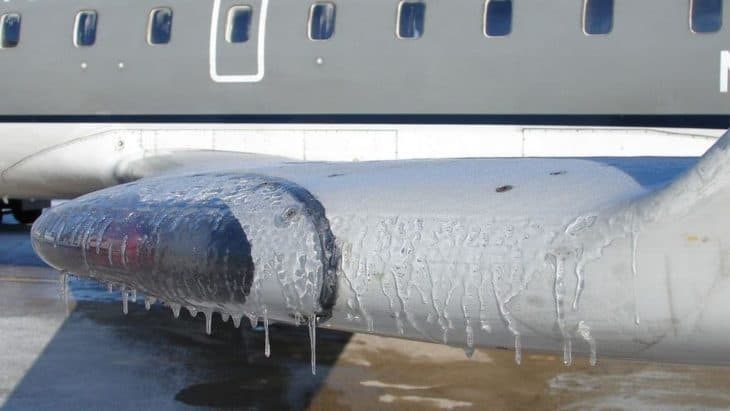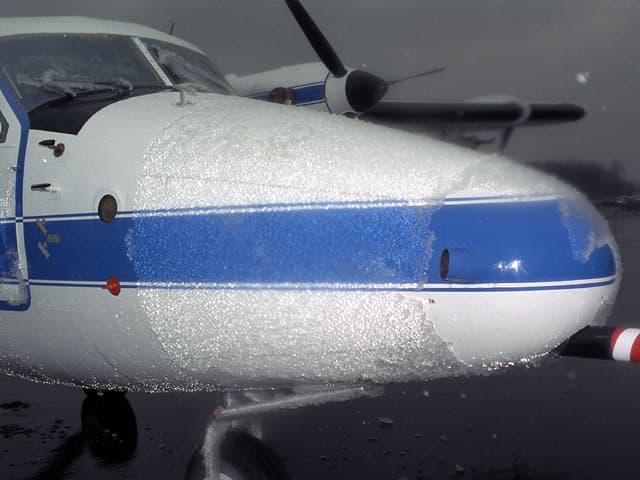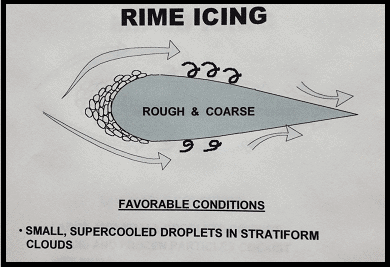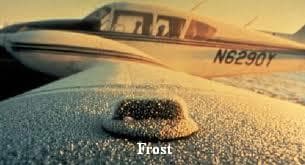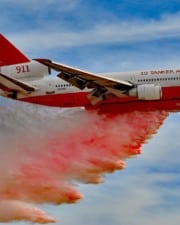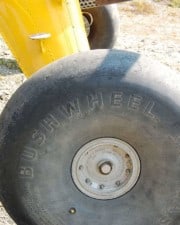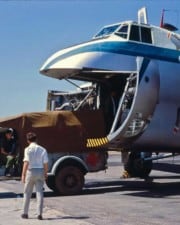One of the greatest hazards of flying in cold weather is aircraft icing. Aircraft icing refers to coating or deposit of ice on any object of the aircraft, caused by freezing and impingement of liquid hydrometers. It can have a detrimental effect on the aircraft, and it can make it hard for the pilot to fly the plane.
Significant factors that affect the aircraft icing threat include environmental temperatures, aircraft speed, aircraft surface temperature, the shape of the aircraft surface, particle concentration, and particle size.
The rate of the catch is affected by the droplets’ size. Small drops follow the airflow and form around the wing while heavy, large drops strike the wing of an aircraft.
When a small droplet hits, it will only spread back over the aircraft wing a small distance while the large drop will spread farther. As the airspeed of an airplane increases, the number of droplets that strike the aircraft also increases.
The rate of aircraft icing catch is also affected by the curvature of the wing’s leading edge. Thick wings tend to catch fewer droplets than thin wings. This is why an aircraft with thin wings that flies at a high speed through large droplets has the greatest rate of aircraft icing catch.
How an Aircraft Is Affected by Icing
Ice can collect on the surface of the plane and hamper the function of the wings, propellers and control surface as well as canopies and windscreens, pitot tubes, static vents, air intakes, carburetors and radio antennas.
Turbine engines of the plan are extremely vulnerable. Ice that forms on the intake cowling can constrict the air intake. When ice forms on the starter blades and rotor, it degrades their efficiency and performance and can even lead to flame out. When chunks of ice break off, the engine may suck them in. This can lead to structural damage.
Surfaced of an aircraft that have tiny leading edges – like antennas, horizontal stabilizers, propeller blades, landing gear struts, and rudder – are the first to accumulate ice.
The first place of an aircraft where ice usually forms first is the thin outside air temperature gauge. The ice generally takes over the wings at the end. Occasionally, a thin coating of ice may form on the aircraft’s windshield. This may occur on landing and take-off.
When ice forms on the propeller, the pilot might notice a loss of power and engine roughness. The ice first forms on the propeller dome or spinner. It then makes its way to the blades.
Ice may accumulate unevenly on the blades and, as a result, they might go out of balance. This will result in vibrations that will place undue stress on the blades as well as the engine mounts, which may cause them to fail.
If the engine’s propeller is building up ice, then the same thing will be happening on tail surfaces, wings, and other projections. The accumulated ice’s weight isn’t as serious as the disruption of airflow it causes around the tail surface and wings.
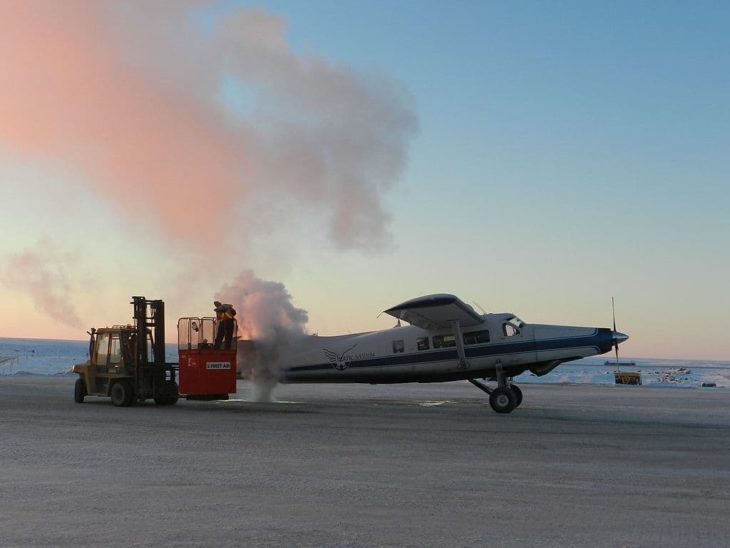
The accumulated ice destroys lift and changes the cross-section of the airfoil. It also increases drag and stalling speed. On the other hand, the thrust of the aircraft degrades because of ice that accumulates on the propeller blades.
In such a scenario, the pilot is forced to use a high angle of attack and full power to maintain altitude. When the angle of attack is high, ice will start forming on the wing’s underside, adding more drag, and weight.
Under icing conditions, landing approaches, as well as the landing, can be hazardous. When landing an iced aircraft, pilots should use more speed and power than usual.
Flight instruments may not operate if ice builds up on the static pressure ports of the plane and the pilot tube. Rate of climb, airspeed, and altimeter might be affected. Gyroscope instruments inside the aircraft that are powered by a venture might get affected too when ice builds up on the throat of the venturi.
Types of Aircraft Icing
We generally recognize 4 main types of aircraft icing. Rime ice, clear ice, mixed ice, and frost. Read on for more in depth knowledge on each of these types of ice.
1. Rime Ice

A milky white colored or opaque ice that deposits on the surface of the aircraft when it’s flying through filmy clouds is classified as rime ice. It is usually formed because of small supercooled droplets when the rate of catch is low.
Rime ice accumulates on the wings’ leading edges and on pilot heads, antennas, etc. For rime ice to form on the aircraft, the temperature of the aircraft’s skin should be below 0°C. Due to the low temperature, the droplets will quickly and completely freeze. Even after freezing, droplets don’t lose their spherical shape.
Rime ice deposits don’t have a lot of weight, but it is still dangerous because it alters the aerodynamics of wing camber and affects the instruments. Typically rime ice is brittle and it can be dislodged quite easily with de-icing fluid and equipment. Occasionally, both clear ice (discussed below) and rime ice will form concurrently.
2. Clear Ice

The heavy coating of ice that forms when an aircraft flies through clouds that contain large quantities of big supercooled droplets is called a glaze ice or clear ice.
Clear ice usually spreads unevenly over tail surfaces, antennas, propeller blades, and wings. It forms when a small part of the droplet freezes on getting into contact with the surface of an aircraft.
The aircraft’s temperature rises to 0°C when the heat is released during the initial impact of the droplet. This allows a large portion of the water droplets to spread out and mingle with other droplets before freezing. Thus a firm sheet of ice forms on the aircraft without any embedded air.
As more clear ice accumulates on the aircraft, it starts building up into a horn shape, project ahead of the tail surface, wing, antenna, and other structures.
Airflow is severely disrupted by this unique formation of ice and it increases the drag in the flight by about 300 percent to 500 percent. Clear ice is extremely dangerous because it makes the aircraft lose lift as it alters wing camber and disrupts the flow of air over tail surface and wings of the aircraft. Moreover, it increases drag which is dangerous for the plane.
Vibrations resulting from the unequal loading on the propeller blades and wings are also dangerous for the flight. When large blocks of clear ice break off, vibrations may become so severe that they might impair the aircraft’s structure. When clear ice is mixed with sleet or snow, it might appear whitish.
3. Mixed Ice

As the name suggests, mixed ice is the type of ice that carries the properties of both rime ice and clear ice. It forms when both small and large supercooled droplets are present.
The appearance of mixed ice is irregular, rough and whitish. Favorable conditions for forming of this type of aircraft ice include frozen and liquid particles present in the wet snowflakes and cumuliform cloud’s colder portion.
The formation process of this type of aircraft icing includes that of both rime and clear icing. Mixed ice may accumulate rapidly and it isn’t easily removed.
4. Frost
Semi-crystalline frost can form in clear air through a deposition. This doesn’t have a major effect on flying but it can obscure pilot vision by coating the aircraft’s windshield.
It can also interfere with radio signals by forming in the antenna. Frost generally forms in clear air when an aircraft that is cold enters damper and warmer air.
The aircrafts that stay parked outside on cold nights may become coated with this type of ice by morning. Frost forms when the aircraft’s upper surface cools below the temperature of the surrounding air.
Frost which forms on control surfaces, tail, and wings must be removed before takeoff; it can alter the wing’s aerodynamic characteristics enough to interfere with takeoff by reducing lift and increasing stall speed.
Frozen dew can also form on the aircraft that’s parked outside on a cold night when temperatures are below 0°C. This dew is usually crystalline and clear while frost is feathery and white.
Like frost, frozen dew must also be removed properly before takeoff. In fact, it is imperative to remove any kind of moisture before takeoff as these can freeze while the plane is taxing out.
References ▾
Related Posts
